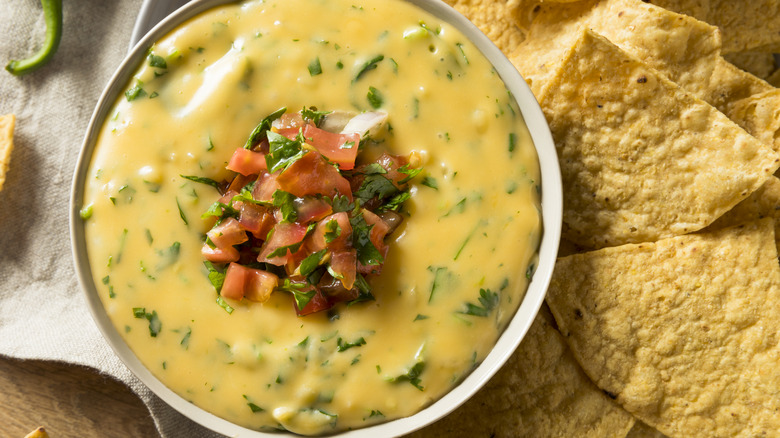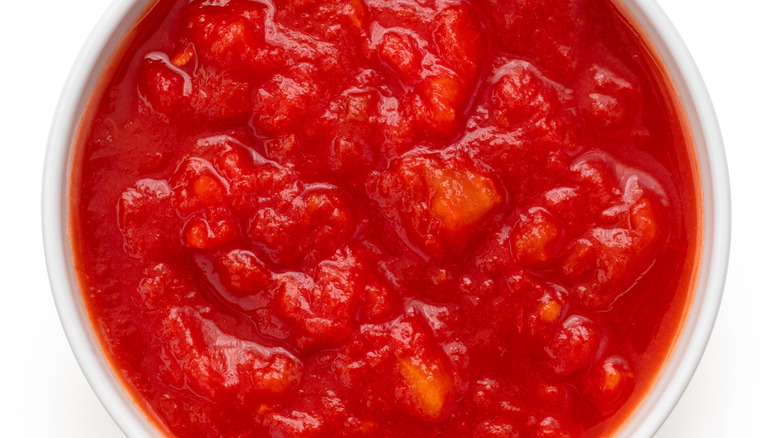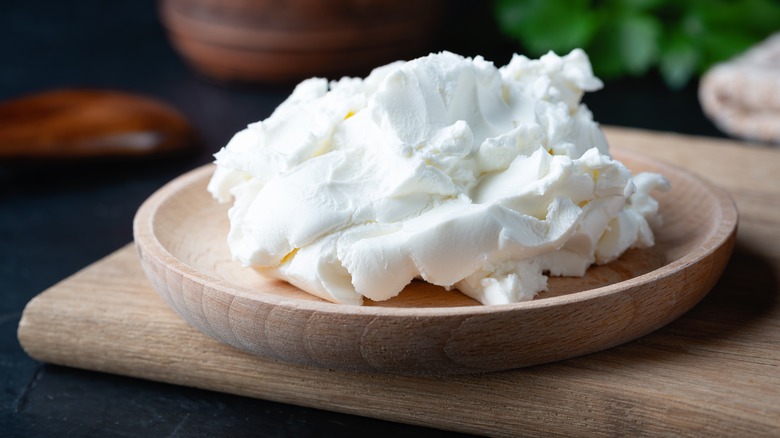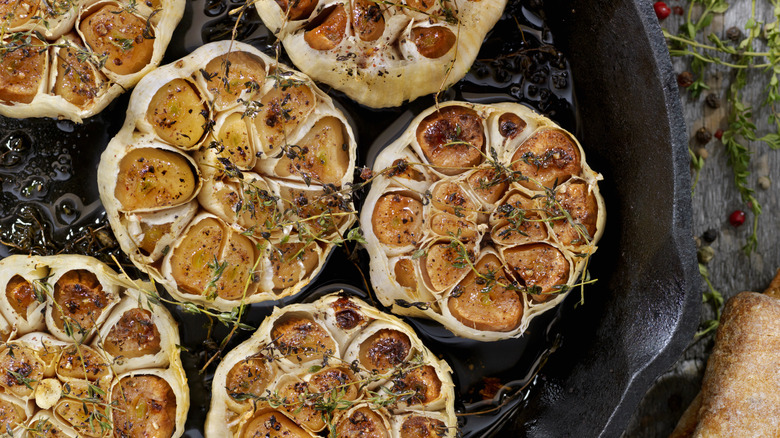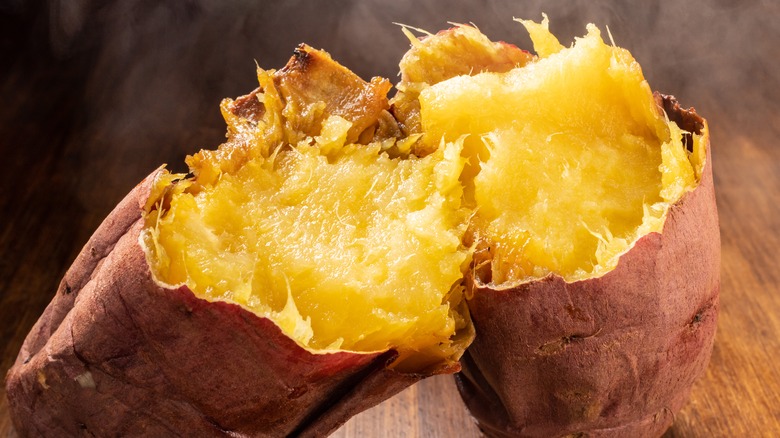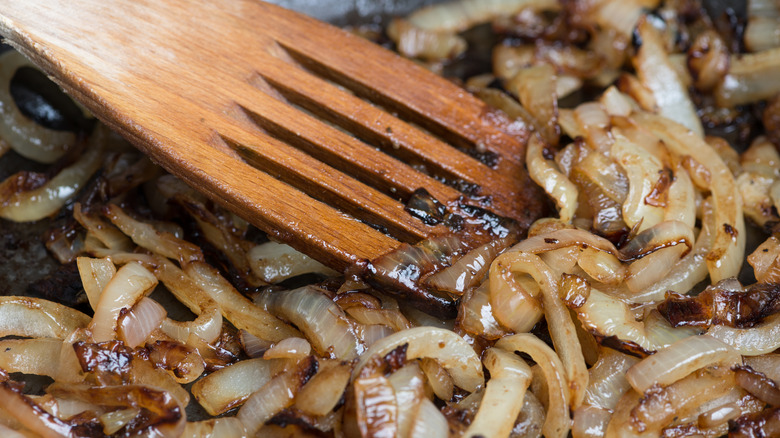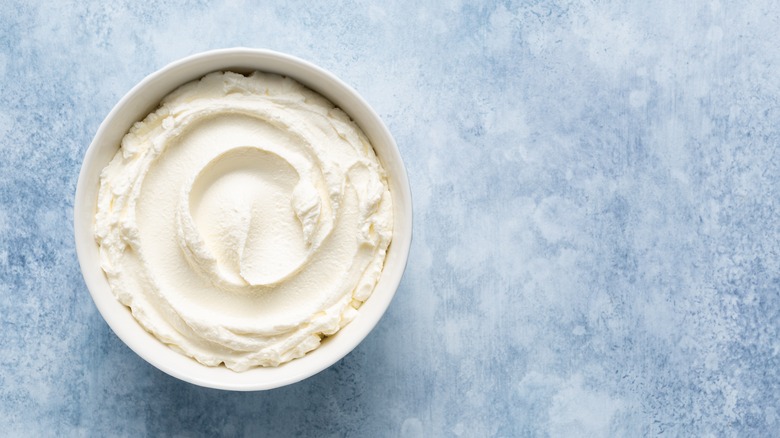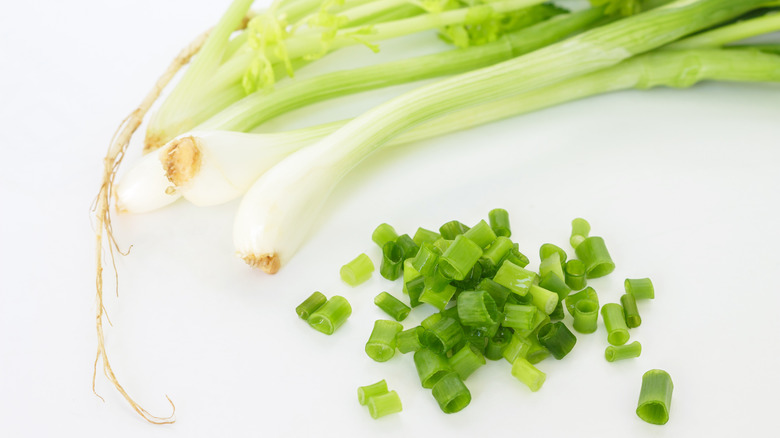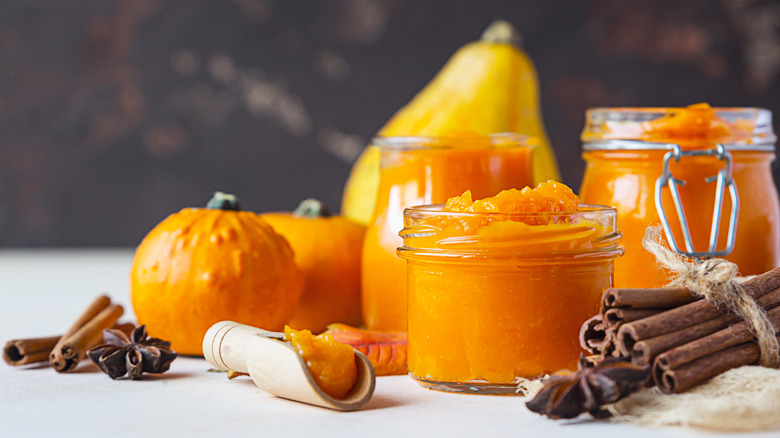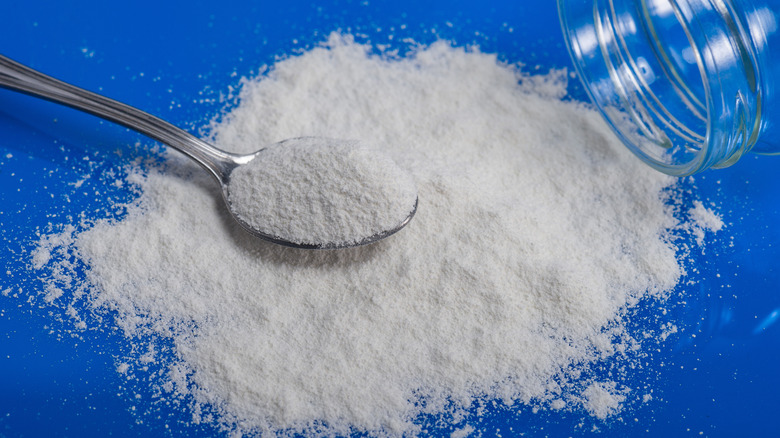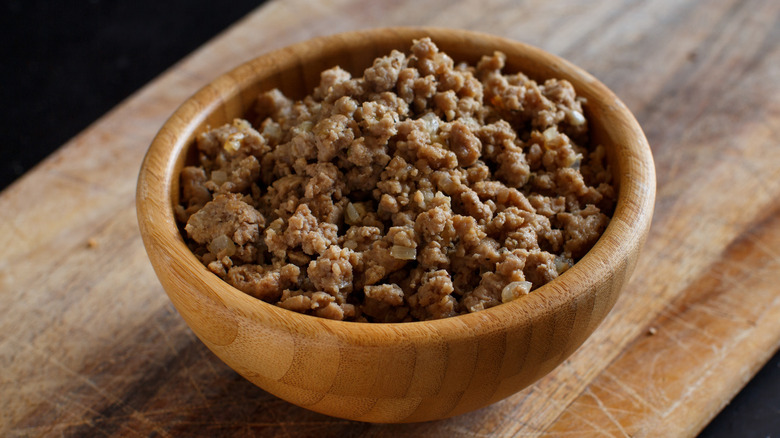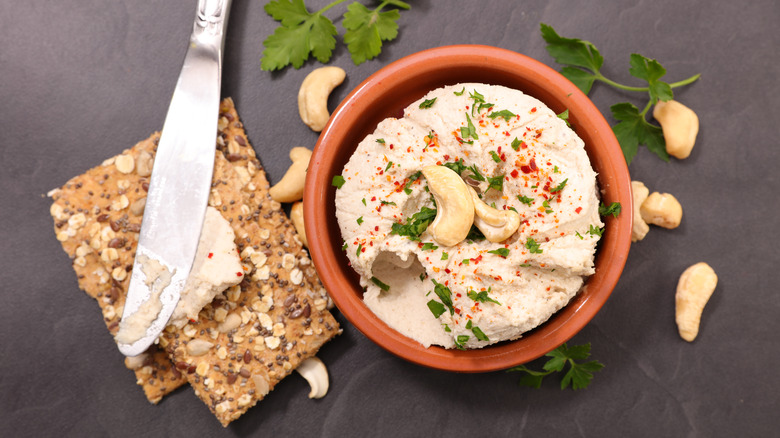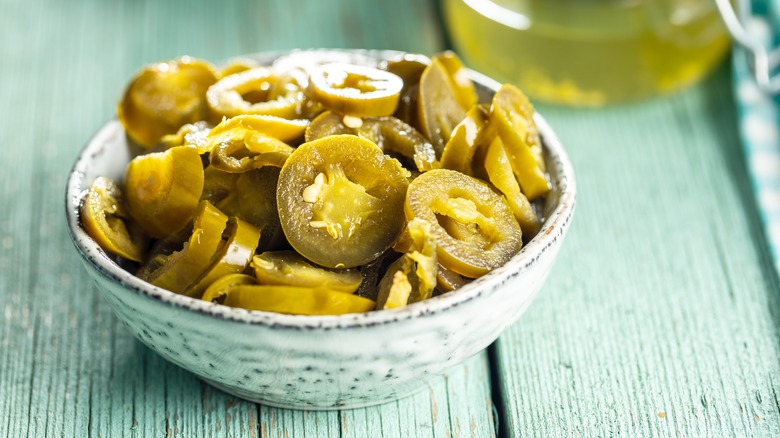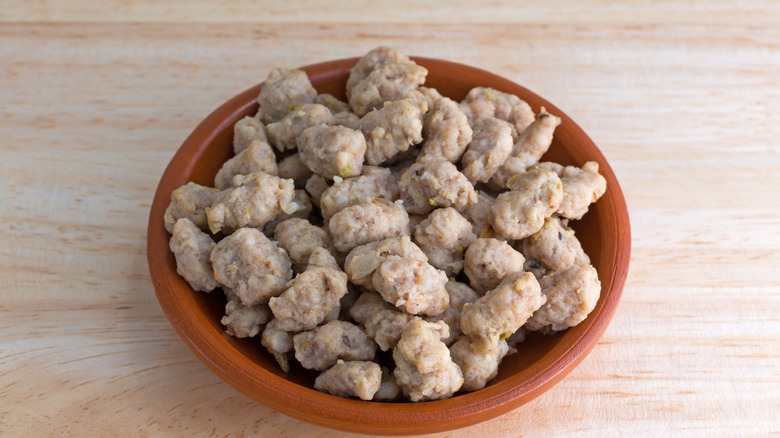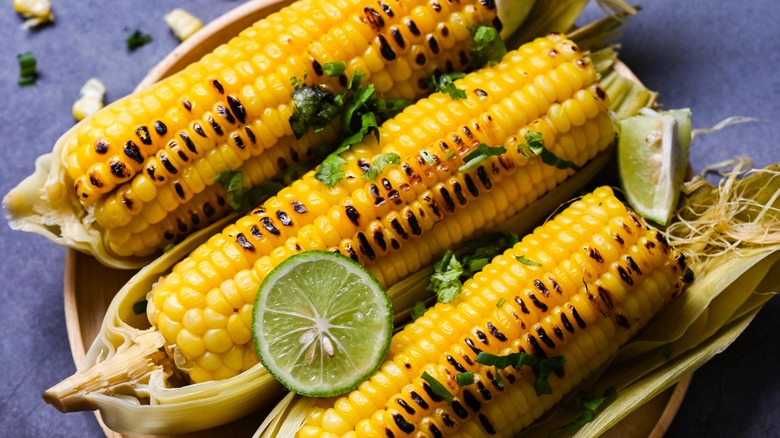15 Ingredients That Will Level Up Your Queso
Ah, queso. It may not fall into the category of authentic or traditional Mexican food – queso is said to have originated in the United States back in 1896 when a recipe appeared in "The Land of Sunshine" magazine – but authenticity aside, a rich, creamy, aromatic cheese dip is tough to resist. Today, queso commonly appears on Mexican and Tex-Mex restaurant menus. It's a dreamy pairing for chips, smothered burritos, and nachos. Let's be honest; everything tastes better when drizzled in warm, melty cheese.
Queso also happens to be quite easy to whip up at home, which is fantastic for picky eaters and experiment-oriented home cooks alike, as you can add and subtract ingredients from your queso recipe of choice according to your tastes. Not a fan of Velveeta? Try out different types of cheese. Want to amp up the spice level? Throw some hot peppers in there. Looking for a way to make the cheesiest, smoothest, most melty cheese dip the world has ever seen? Consider adding cottage cheese or sodium citrate to the mix. From different types of cheese to mix-ins and toppings, here are our suggestions for the absolute best ingredients to take your queso to the next level.
1. Canned tomatoes
Tomatoes and queso? The thought of combining these two items might leave you scratching your head, but canned tomatoes are sure to take your cheese dip to the next level. Make no mistake — there are plenty of situations in which fresh tomatoes are far superior to canned. You're not going to want to use canned tomatoes to level up your BLT, upgrade your Greek salad, or elevate a caprese appetizer, for example. However, when it comes to queso, canned is the way to go.
While any variety of canned tomatoes can be added to queso (use a diced variety versus tomato sauce or whole canned tomatoes like San Marzanos), the absolute best option is canned diced fire-roasted tomatoes, which often include ingredients like onions, garlic, and roasted peppers. These flavors will imbue your homemade queso with zesty spices and aromatics — an easy way to level up your homemade or store-bought queso dip.
2. Cottage cheese
Cottage cheese is having a moment, and we're here for it. This creamy, almost soupy-textured cheese has a mild flavor and packs about 14 grams of protein per ½ cup, making it a tasty snack. A scoop of cottage cheese alone or with crackers or crudités is great, but it also makes an excellent base for creamy dips, including queso. The cottage cheese queso trend combines cottage cheese with shredded cheese of your choice as well as any desired mix-ins or toppings for a smooth, creamy, cheesy dip that's sure to be a hit at your next neighborhood BBQ or friends' potluck.
It's actually easier than a "traditional" queso recipe — far fewer ingredients are involved, and you'll just need to mix everything together in a blender. The dip can be served hot or cold and benefits greatly from mix-ins like the aforementioned canned fire-roasted tomatoes, green chiles, dried chile powders, onions, garlic, and the like. Top it all off with some cooked chorizo, cilantro, green onions, or whatever else floats your boat.
3. Roasted garlic
You've probably seen roasted garlic served on pizzas, but easy roasted garlic is a cinch to make right at home using only three easy-to-find ingredients: full bulbs of garlic, olive oil, and a pinch of salt. These cloves have a flavor that differs greatly from that of raw or even diced and cooked garlic — they're sweet, aromatic, and still a little spicy in that signature garlic way. Roasted garlic involves cooking the entire garlic bulb whole, then peeling apart the individual cloves for bite-sized magic.
Unless you're a garlic super-fan and don't mind walking around with bad breath for the rest of the day, you'll want to blend up your roasted garlic cloves with your queso recipe of choice using a food processor or immersion blender — the cloves, when whole, are generally quite large, and may not be fun to bite down on in the midst of cheesy ecstasy. By blending roasted garlic with additional queso ingredients, you'll elevate the whole dip with a pleasantly sweet, roasted garlic flavor.
4. Sweet potato
Here's a weird one for you. While sweet potato may be an unexpected ingredient for queso, adding these root veggies to your cheese dip is a foolproof way to thicken up the cheese and give your queso a subtly sweet bite. Sweet potatoes are nutritional powerhouses, bringing plenty of fiber, minerals, antibodies, and other important vitamins to the table. Whether you're eating them whole, chopped and roasted, or in fry form, their health benefits are undeniable.
Sweet potatoes may have the word "sweet" in their name, but theirs is an earthy sweetness that pairs well with many types of cheese, including those used in queso. Cooking the sweet potatoes prior to adding them to queso is essential as nobody wants chunks of raw sweet potato in their cheese dip (plus, those suckers are hard). Roasting them whole, with skins on, is a great way to bring out the optimal flavor and a bit of a caramelization effect, just scoop the soft flesh out after cooking. Adding cooked sweet potato to queso is a fantastic way to sneak some extra veggie goodness into a dish that, let's be honest, isn't the healthiest appetizer.
5. Caramelized onions
In the same way that roasting garlic leads to a completely unique flavor in the finished product, caramelizing onions transforms them from layered, stinky (but delicious) alliums into something totally different. Caramelized onions are sweet and contain very little of the onion flavor one finds in raw, roasted, sautéed, and other forms of onions. Use a yellow onion over a sweet potato, and if you're pressed for time, adding sugar is the best way to caramelize onions in an efficient manner.
There are many ways to use caramelized onions. The most popular is likely French onion soup, but caramelized onions also present a great way to level up your queso. Many queso recipes call for sautéed onions and garlic together before adding in cheese and additional ingredients. Caramelizing requires a little more time, but the end result is well worth the extra time spent sweating over a stovetop. Caramelized onions add a pungent sweetness to cheese dip that regular onions simply can't achieve.
6. Cream cheese
There's a lot of debate about the best cheeses to use in queso. While technically, queso can be made from any type of cheese, the general consensus is that processed cheeses (think Velveeta) are the ultimate choice for melting and achieving a smooth texture throughout the dip without risking clumping, oil pooling, and similar perils associated with homemade queso. However, you don't have to use processed cheese for your dip. If the thought of melted American cheese makes you gag, there are plenty of other options available.
Whatever cheese floats your boat, your queso will benefit greatly from the addition of cream cheese to the mix. When heated over a low temperature, cream cheese's thick and smooth consistency helps facilitate the binding of the additional elements of queso, melting into the cheese dip of your dreams. Its taste works well with any other cheese and tends to complement traditional queso add-ins as well — Rotel, garlic, onions, cilantro, cooked meat, and so on. As is the case with any type of queso, just be sure to keep an eye on your dip as it all heats up together, turning the heat down or adjusting as needed to prevent curdling, clumping, and worst of all, burning.
7. Green onions and cilantro
A lot of elements go into exceptional queso. From the type of cheese used to the use (or lack) of onions and garlic to the addition of mix-ins like canned peppers, tomatoes, seasonings, and the like, there are many ways to customize queso according to your tastes. Like it spicy? Throw some hot sauce or jalapeños into the mix. Want a smoky element? Consider using liquid smoke or canned chipotle peppers in adobo sauce with your other ingredients. Want a meaty oomph? Use taco meat, soyrizo, or your favorite seasoned ground meat (or meat substitute) to take things up a notch.
If you feel like you need a cool, refreshing element in an otherwise dairy-heavy dip, topping your piping hot dip off with fresh herbs is the way to go... when it comes to Mexican and Tex-Mex food, green onions and cilantro are the way to go. Green onions are chives' big brother and offer a spicy, onion-like, but fresh hit to queso. Cilantro — which may as well be considered the Kanye West of herbs for all the controversy it causes — is another fantastic queso topping that offers a cooling element to the mix, assuming you don't have the gene that makes cilantro taste like soap. If nothing else, both cilantro and green onions bring a nice pop of green color to the table.
8. Canned pumpkin
There's no disputing it: Pumpkin is the reigning champ when it comes to fall foods. From lattes to ravioli to pie, people have been using this funky orange gourd to dress up their recipes for as long as anyone can remember. While traditionally associated with sweet dishes, pumpkin has increasingly been used in savory creations in recent years. Its sweet, earthy flavor is a great way to balance smoky, spicy, and other zesty flavors without an overwhelming amount of sweetness, and this is exactly what happens when pumpkin meets queso.
Most of us don't have the time or energy to can our own pumpkin — or access to jack-o-lanterns outside the month of October — and canned pumpkin offers a fantastic backup if you can remember to stock up before the shelves are emptied leading up to Thanksgiving. By combining canned pumpkin puree with Velveeta and whatever other mix-ins you like in your cheese dip, you'll balance out the cheesiness with a hint of squashy, slightly herbaceous flavor. Serve your pumpkin queso with chips, or use it in this pumpkin queso and black bean nachos recipe. It's the perfect appetizer for a fall football game.
9. Sodium citrate
Ever heard of sodium citrate? It might sound like something lurking in a locked cabinet in a school science lab, but sodium citrate is just a fancy word for an emulsifying salt, and it's readily available on Amazon and at some grocery stores. In fact, sodium citrate is one of the active ingredients in American cheese, one of the most common types of processed cheese used in queso due to its high meltability factor.
Whisking sodium citrate into water and mixing it in equal parts with your other queso ingredients will yield a soft, perfectly melted cheese dip. This is particularly great news if you're experimenting with cheeses that don't melt as easily, like a hard cheddar or blue. It shouldn't affect the end result much, either — being an emulsified salt, sodium citrate has a salty, slightly sour flavor, like concentrated table salt. It's a well-kept secret and one of the most foolproof ways to guarantee a lump-free, easy queso that's a breeze to dip.
10. Ground meat
Many Mexican and Tex-Mex restaurants that serve queso offer customers the opportunity to dress things up a bit by adding avocado, fresh herbs, or ground meat to the mix. Adding ground meats, like spicy taco-seasoned ground beef, turkey, chicken, or chorizo to queso is both tasty and functional. Not only will you add some extra protein to your dip, but you'll also reap the benefits of the seasonings in whatever ground meat is used.
Texturally, ground meats are ideal for pairing with queso because they're easy to scoop up with a chip and allow for easy drizzling over nachos or burritos when compared to the logistical challenges associated with things like steak, al pastor pork, or chicken. You can just as easily throw some plant-based meat substitutes into the mix — soyrizo is a soy-based version of chorizo, and many brands now carry meatless crumbles that bear a striking resemblance to ground meats and can be seasoned any way you like.
11. Beans
Beans are prolific when it comes to Mexican cuisine. From simple sides like beans and rice to their use in full-blown meals, like bean burritos and chili, beans offer a vegetarian-friendly way to flesh out a meal. There are many types of beans, of course, and they all have their own unique health benefits depending on the variety. However, most varieties of beans offer plenty of fiber, protein, iron, and other elements critical to maintaining a healthy lifestyle.
Canned beans are also wallet-savers, sometimes clocking in at under $1 per 15-ounce can. If you're looking for a cheap, simple way to spice up queso dip, a can of beans is a great way to go. Whether you're making your queso from scratch, spooning it from a jar, or just looking for a way to stretch your leftovers, adding canned black or pinto beans to cheese dip is a win in every way.
12. Cashews
As more and more people contemplate and adapt to plant-based or vegan diets, the market for plant-based, vegan foods has absolutely exploded. It seems there's a plant-based version for absolutely everything — you'll find juicy, meaty-looking vegan burgers at many burger joints, melty, vegan cheese-topping pies at lots of pizzerias, and a slew of meatless recipes on the web. While plant-based substitutes don't always taste exactly like the real thing and come with health and environmental concerns of their own, it's a great time to be a vegan in America.
Cheese is one of the hardest dairy products to replicate in a plant-based way. It's extremely challenging to find vegan cheeses that truly mimic the taste and texture of their dairy counterparts, but one can always try. Cashews are brilliant for replicating some varieties of cheese, and water-soaked cashews offer a simple hack for creating vegan queso. The softened cashews are combined with nutritional yeast, spices, and one's desired add-ins for a creamy, funky dip. It doesn't taste quite like the melty, cheesy queso most of us are used to, but it's a heck of a good start.
13. Canned peppers
Canning is a great way to cut down on food waste, save money, and cut down on prep time, and canned peppers are some of the tastiest and most easily accessible goods out there. It's not always easy to find raw green chiles and chipotle peppers in the grocery store, and the canned versions of these spicy veggies are just as effective in many cases. Peppers can be canned in water, brine, oil, or spices, often giving the peppers even more pungent flavors than they would in their ripe, raw state.
There are myriad types of canned peppers available at the supermarket. Chipotles, often canned in adobo sauce, offer a rich, smoky flavor, and canned jalapeños are always winners. Peperoncinos have a zesty, tangy bite, while green chiles can be found canned in many ways, including fire-roasted for an extra kick. If you're in search of an easy, cheap way to elevate your homemade or store-bought queso, most varieties of canned peppers can offer a lot of flavor for minimal effort and cost.
14. Hot breakfast sausage
If Ree Drummond suggests it, you know it's going to be good. Drummond, also known as the Pioneer Woman, is famous for hearty, homey, yet elevated dishes that are easy for the average person, with standard kitchen equipment and no formal culinary training, to follow. She's been cooking up delicacies for so long that it feels like she's got a recipe for everything, so of course, she has an incredible queso recipe.
You won't find expensive cheeses and organic veggies in this recipe. Hers is a simple, affordable concoction drawing on classic queso ingredients like Velveeta, Rotel, canned chiles, and fire-roasted tomatoes, but there is a twist. The Pioneer Woman's signature queso ingredient is (drumroll, please)... hot breakfast sausage. Spicy pork adds flavor and protein the same way chorizo or ground beef does. It's zesty, unexpected, and a fabulous way to take your cheese dip from a side dish to a full-blown meal.
15. Corn kernels
Corn doesn't always get the credit it's due. It's a staple and versatile ingredient in Mexican cooking, used in the production of everything from tortillas to syrup, and also tastes great whether eaten on the cob, in salsa, on top of a salad or as part of an elote-style corn dip. Corn is a summer crop in the United States, but it's an easy grain to find in supermarkets year-round, whether on the cob or in a can. Corn is surprisingly nutritious, providing health benefits like insoluble fiber, magnesium, and a handful of other vitamins and minerals with each serving.
Corn kernels can provide queso with a tasty, nutritious, and texturally pleasing twist. If possible, corn roasted right on the cob is the best option — that roasty, toasty flavor is hard to imitate, and if you want to slather your corn on the cob in some butter and chile powder, even better. That said, canned corn is a decent second choice, especially if you've got a fire-roasted canned corn hiding at the back of your pantry.
